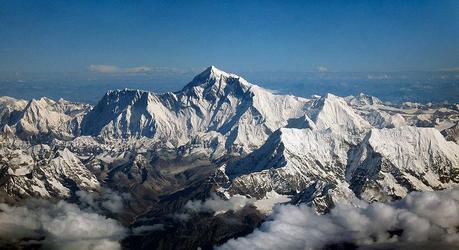 Yesterday I posted a lengthy piece about a report that Russell Brice, the owner/operator of Himalayan Experience, posted on the company's website. That was just part one of what will eventually be a five part series, in which Brice shares details, and his own thoughts, on the events that occurred on the South Side of Everest this spring. You'll no doubt recall that an avalanche claimed the lives of 16 Sherpas on April 18, and in the aftermath of that tragedy, the season was subsequently cancelled. If you haven't read the first part of Russell's story, I would encourage you to do so here. It has some rather revealing information about the Tourism Ministry in Nepal, and the lack of communication with the teams on the mountain.
Yesterday I posted a lengthy piece about a report that Russell Brice, the owner/operator of Himalayan Experience, posted on the company's website. That was just part one of what will eventually be a five part series, in which Brice shares details, and his own thoughts, on the events that occurred on the South Side of Everest this spring. You'll no doubt recall that an avalanche claimed the lives of 16 Sherpas on April 18, and in the aftermath of that tragedy, the season was subsequently cancelled. If you haven't read the first part of Russell's story, I would encourage you to do so here. It has some rather revealing information about the Tourism Ministry in Nepal, and the lack of communication with the teams on the mountain.As promised, Brice has followed up his initial post with two more, each with more interesting insights into what happened on the mountain this spring. In the second article, he talks about the day of the avalanche itself, and how impressed he was with how many people responded so quickly to help locate survivors in the avalanche and to lend assistance where they could. Mountain guides, climbers, doctors, and others from a host of teams immediately sprung into action to try to lend a hand, and it is testament to the Everest community that so many people risked their own lives to help others.
But, Brice is also quick to point out that the Ministry also got involved, and managed to cause more problems than it was able to solve. The teams in Base Camp had already worked to collect the bodies of the fallen, and had a plan to deliver them to a central location in the Khumbu Valley, so the families could come identify them, and claim the dead. But the Ministry decided to fly all of the bodies to Lukla, which is not a central location at all. Worse yet, the helicopter that they brought to handle that task broke down, leaving grieving families to wonder about their loved ones for even longer.
The third post from Russell begins to tell the story of the days following the avalanche, and the aftermath of that tragedy. Immediately following the accident, a four-day suspension of climbing was put into place out of respect for the fallen. That eventually turned into seven days, as many of the Sherpas in BC returned home to be with friends and family. It was during this time that tension started to build up amongst the Sherpa, with a vocal minority stirring up trouble. Brice recalls a meeting between the Sherpas and the Ministry's liaison officers in Base Camp that nearly ended in a brawl. He says that westerners had to help break up the arguments and ensure that things stayed calm, otherwise there may have been a violent outbreak.
Brice calls out two leaders of the Sherpas for their actions in particular. He names Pasang Tenzing and Pasang Bhote as being two of the men who were especially vocal and helped to stir up further tensions. These two men were at the heart of a conflict that Russell himself faced on Manaslu two years ago, when following an avalanche there, some of the Sherpas wanted to shut down the mountain. They also played a role in last year's attack on European climbers Simone Moro and Ueli Steck as well. Russell says that while he believes they have good intentions with their actions, that he himself does not trust them.
The rest of the article talks about the demands that were placed on the Ministry by the Sherpas, and how those demands shifted from what was originally discussed. He also says that many of the Sherpas signed a blank petition, that was later filled in with details calling for the shutdown of climbing on Everest. Most of those who signed the paper had no idea what they were signing, and he believes they still don't know to this day. It seems there was a lot of deception taking place in BC, with some of the workers not even being fully aware of what the situation was at the time.
These articles are interesting to read, as they are one of the first detailed, first-hand accounts, of the events on Everest from this season. Brice is someone who is well respected and at the center of the action on the mountain, so he is in a good position to know the details of what happened. He has been leading teams to Everest for 20 years, and is not one to shy away from sharing his feelings. Reading his insights has helped to put a lot the stories we heard from the mountain this year in perspective. I am now looking forward to reading the final two pieces in this series to read Russell's thoughts on how things ensued, and the ultimate aftermath of the shutdown.
Stay tuned for more next week.

